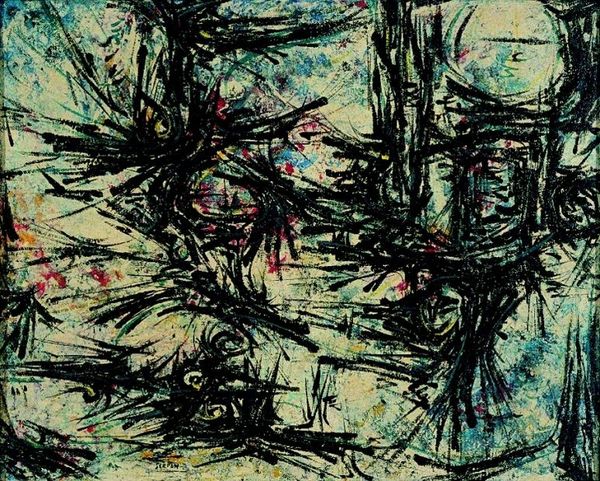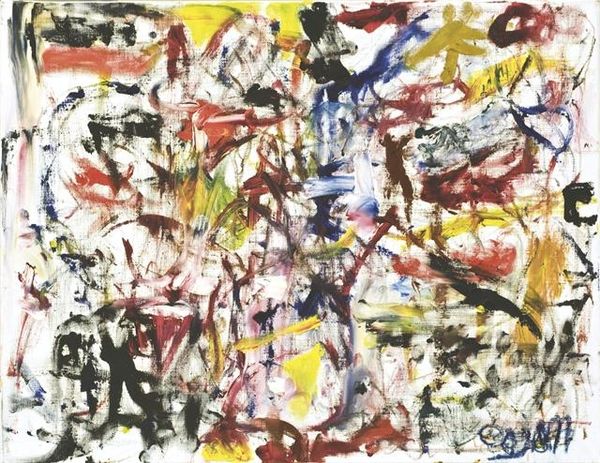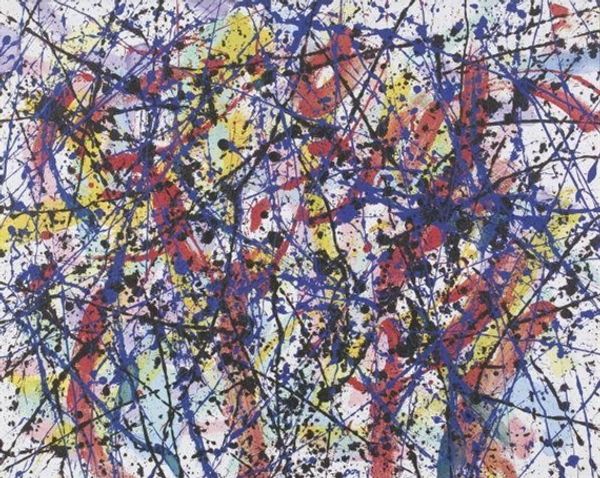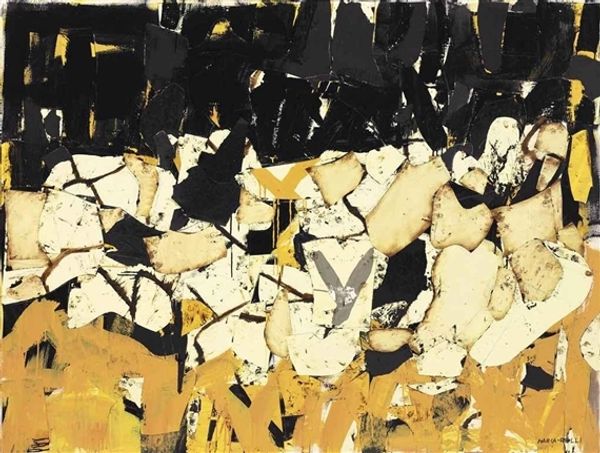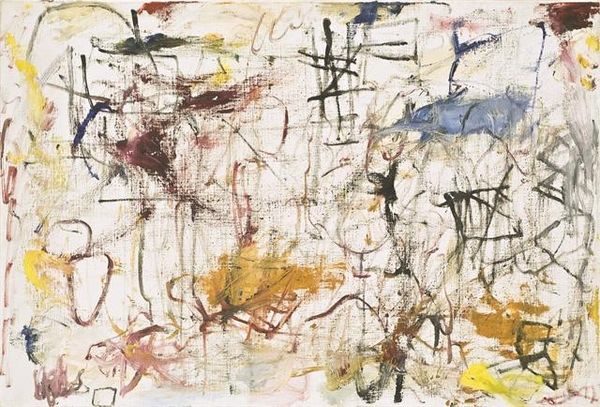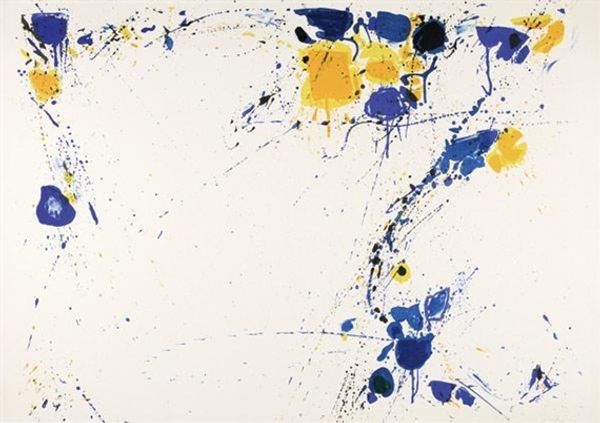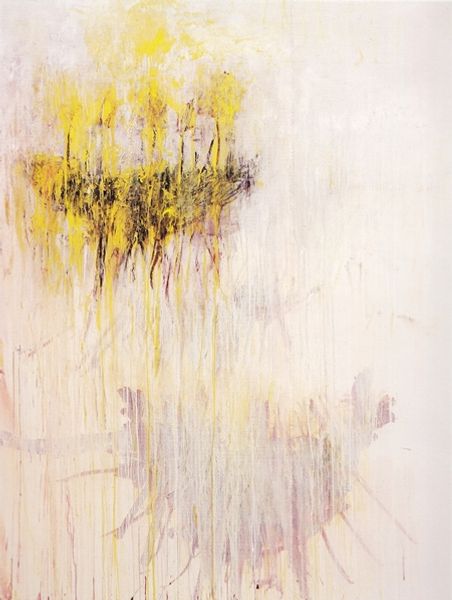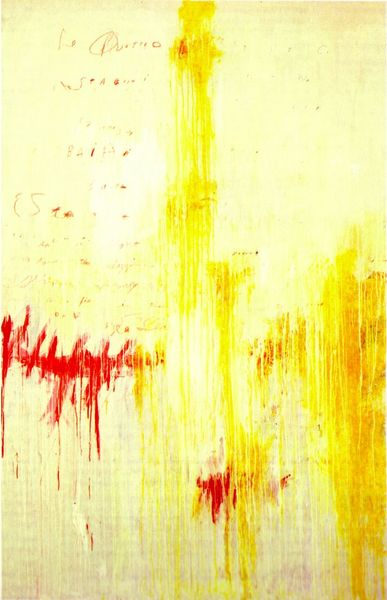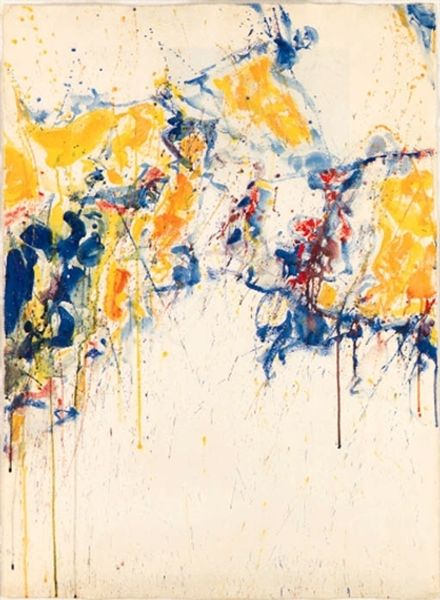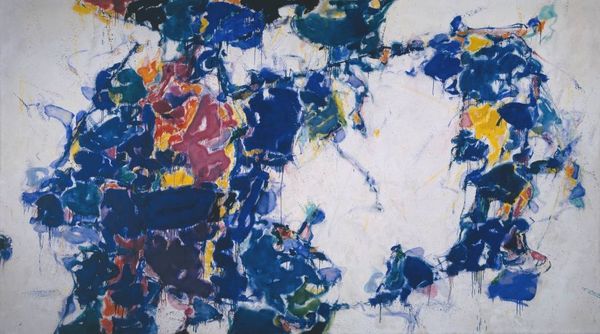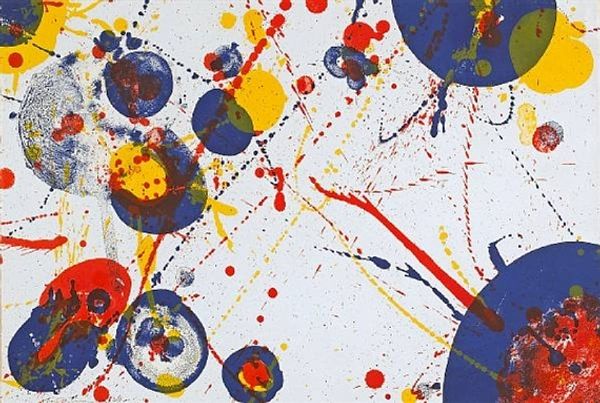
painting, acrylic-paint
#
abstract-expressionism
#
abstract expressionism
#
painting
#
landscape
#
acrylic-paint
#
form
#
geometric-abstraction
#
line
Copyright: 2012 Sam Francis Foundation, California / Artists Rights Society (ARS), NY
Curator: Looking at this Sam Francis, *Japan Line Series No. 1 (Composition)* from 1958, I am immediately struck by its airiness, and the balance between chaos and carefully placed color. Editor: Interesting. To me, it looks more like controlled material experimentation than a dive into complete chaos. You've got acrylic paint there on probably unprimed canvas, and I can sense the artist letting gravity take over as part of his making process. It makes me think of what was happening at the level of materials research at that moment in art history. Curator: Well, abstract expressionism, as we know, often acted as a vessel for personal and collective emotion post-World War II. How much of Francis’ work responded to the political landscape and societal changes, specifically how it landed him in Paris, informs how we should consider the making process here, I would suggest. The very public nature of American art at the time, exhibited abroad in the name of freedom of expression…that changes everything about these materials. Editor: That's true, and his choice of leaving large areas of the canvas bare seems rather deliberate. Almost a commentary on emptiness, perhaps reflecting the simplicity sought after in Japanese art, to which his travels attuned him. And there's a negotiation happening with his materials—viscosity, transparency—that almost challenges our definition of "painting." Think of the traditional associations people might bring: landscapes, portraits, representation. Francis dispenses with all that, right? Curator: Right! And if the material supports are mass-produced or unconventional, if he worked collaboratively or employed industrial techniques…all that would really shift our reading, right? How “precious” or historically significant we perceive it. We can't divorce it from its display, its collection, and ultimately its social impact as well, given abstract expressionism’s ties to postwar U.S. cultural diplomacy. Editor: Absolutely. The artist's hand is evident, yet it relinquishes control to chance happenings in materiality, questioning the romantic notion of the singular artistic genius. Curator: Seeing how it fits within art history and its era's sociopolitical framework definitely provides a crucial perspective on understanding its initial reception and ongoing significance. Editor: And by studying those materials, their qualities, costs, access – we learn to read the social dynamics enmeshed even in an abstract composition like this one.
Comments
No comments
Be the first to comment and join the conversation on the ultimate creative platform.

